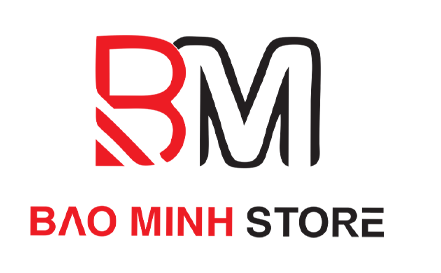youxxxsex.com
How Perfectionism Shapes Foot Porn Pedicure Preferences
Contents
- Analyzing the Micro-Details: Nail Shape, Cuticle Care, and Skin Texture Demands
- The Psychological Link: Why Symmetry and Flawlessness Trigger a Stronger Response in Viewers
- Practical Pedicure Guide for Creators: Achieving the “Perfect” Look That Resonates with a Perfectionist Audience
How Perfectionism Shapes Foot Porn Pedicure Preferences
Explore the link between perfectionism and foot porn pedicure choices. Learn how specific aesthetic standards influence nail shape, color, and skin smoothness.
Perfectionism’s Influence on Pedicure Ideals in Foot Content
For connoisseurs of podiatric imagery, the ideal nail treatment adheres to a specific, almost clinical standard. Nails must be flawlessly squared with subtly rounded corners, a shape known as “squoval,” extending precisely one to two millimeters beyond the toe tip. This length is critical; anything shorter appears stunted, while longer nails can look unkempt. The nail plate itself demands a smooth, semi-matte finish, often achieved with a high-quality buffing block rather than a glossy topcoat, which can create distracting reflections under photographic lighting. This meticulous attention to detail transforms the visual appeal from simply clean to captivatingly flawless.
Color selection is a deliberate act of minimalism. A sheer, milky nude, such as OPI’s “Bubble Bath” or Essie’s “Ballet Slippers,” is the benchmark. These shades enhance the natural pinkness of the nail bed without overpowering it. Bold colors, intricate art, or French tips are generally rejected as they distract from the organic form and symmetry. The cuticle work is non-negotiable: it must be pushed back gently and uniformly, with no trace of hangnails or dry skin. Any visible regrowth at the base immediately disqualifies the aesthetic.
The pursuit of this immaculate presentation drives specific product and technique choices. Oil-based cuticle softeners are favored over harsh chemical removers to maintain skin integrity. A glass nail file is required for precision shaping, as emery boards can cause microscopic fraying. The final step involves hydrating the surrounding skin with a non-greasy lotion, ensuring there is no residue to mar the visual. This rigorous process reflects a desire not just for beauty, but for an unattainable level of organic purity and order, where every element is controlled and perfected.
Analyzing the Micro-Details: Nail Shape, Cuticle Care, and Skin Texture Demands
Achieve a flawless aesthetic by focusing on an impeccably uniform squoval nail shape, where corners are softly rounded to prevent sharpness while maintaining a linear edge. This geometric precision signals meticulous attention. The length must be consistent across all ten digits, typically extending no more than 1-2 millimeters past the toe tip, creating a clean, understated line. Avoid overly long or pointed styles, which detract from the natural, well-groomed appearance sought by connoisseurs.
Cuticle maintenance is non-negotiable for a superior finish. They must be completely pushed back, creating a deep, clean “U” shape at the nail base, and any non-living tissue meticulously nipped away. There should be no trace of ragged edges, hangnails, or overgrown eponychium. The area must appear perfectly smooth and integrated with the surrounding skin, giving the nail plate maximum exposure and a larger, healthier appearance. Application of a high-quality cuticle oil is standard practice to maintain this suppleness.
Skin texture demands absolute smoothness, akin to polished marble. This requires rigorous exfoliation to eliminate any calluses, particularly on the heel, ball of the foot, and around the big toe. The goal is a uniform, supple surface without any dry patches, flakiness, or rough areas. High-magnification scrutiny reveals every imperfection, so a multi-step process involving chemical peels (using glycolic or lactic acid) followed by gentle physical buffing yields the best results. Post-treatment hydration with a ceramide-rich cream is critical for sustaining this velvety finish.
The Psychological Link: Why Symmetry and Flawlessness Trigger a Stronger Response in Viewers
Viewers’ attraction to immaculately groomed extremities is rooted in evolutionary psychology and cognitive biases. The brain is hardwired to associate bilateral symmetry with genetic fitness and good health. An impeccably executed cosmetic treatment on the nails and skin signals an absence of disease or injury, activating primitive neural pathways linked to mate selection and desirability. This response is automatic and bypasses conscious reasoning, creating a powerful, instinctual attraction.
Specific visual cues that intensify this response include:
- Uniform Nail Length and Shape: Identical shapes, whether squared, oval, or stiletto, create a visual rhythm. The human eye finds this regularity pleasing, processing it with minimal cognitive load. Discrepancies in length or shape disrupt this pattern and are perceived as jarring flaws.
- Consistent Cuticle Lines: Clean, pushed-back cuticles form a perfect, uninterrupted frame for the nail plate. This precision suggests meticulous care and attention to detail, which appeals to a desire for order and control.
- Unblemished Lacquer Application: A smooth, even coating of polish without streaks, bubbles, or smudges is paramount. The visual cortex registers this as a single, cohesive surface. This is magnified with high-gloss top coats that reflect light uniformly, further enhancing the illusion of flawlessness.
- Symmetrical Toe Alignment: While anatomy varies, cosmetic grooming can create an illusion of greater symmetry. Evenly spaced toes and perfectly centered nail art amplify this effect.
The psychological principle of ‘fluency’ is a key factor. Objects that are easy for the brain to process are perceived more positively. A flawless, symmetrical presentation of the extremities is abella danger porn cognitively fluent. The brain doesn’t have to work to find patterns or resolve inconsistencies. This ease of processing generates a subtle, positive emotional feedback loop, making the viewer feel good without consciously knowing why.
- Cognitive Ease: The brain prefers stimuli that are easy to interpret. A perfect set of groomed nails is simple to categorize as ‘good’ or ‘attractive’.
- Apophenia and Order: Humans have an innate tendency to find patterns. The deliberate order of a professionally done cosmetic treatment fulfills this psychological need, contrasting with the natural chaos of the world.
- The ‘Halo Effect’: When one trait (immaculate grooming) is highly positive, it influences the perception of other traits. Flawless extremities can make the entire individual seem more attractive, clean, and desirable.
This is not merely an aesthetic choice; it is a neurological reaction. The stronger response to precision and symmetry is a direct result of the brain’s preference for signals of health, order, and genetic quality, making meticulously groomed extremities a powerful visual trigger.
Practical Pedicure Guide for Creators: Achieving the “Perfect” Look That Resonates with a Perfectionist Audience
Maintain a cuticle line that is meticulously clean and pushed back, never trimmed, to display a smooth, unbroken base for the nail. Soften cuticles with a solution containing lanolin or jojoba oil for 5-7 minutes before gently easing them back with a steel or orange wood stick. Any residual dry skin should be chemically exfoliated with a mild AHA/BHA gel, not physically cut, to prevent inflammation or micro-tears which are highly visible in high-resolution imagery.
Shape nails into a uniform “squoval” (square-oval) or soft almond silhouette. Every nail must mirror the others in length and form. Use a 240-grit glass file for precise shaping and finishing, moving in one direction only from the side to the center. This prevents splitting and creates a flawless edge. The free edge should be pristine white, indicating healthy nail growth and a lack of staining.
The skin on the heels and soles must appear supple and unblemished. Use a foot file on dry skin before soaking; this targets calluses more directly. Follow with a chemical peel containing urea (25-40% concentration) or salicylic acid to dissolve remaining rough patches. After treatment, hydrate with a thick cream containing ceramides and hyaluronic acid, ensuring no greasy residue remains. The visual goal is smooth, unbroken skin texture without any cracks, flakes, or discoloration.
Select solid, opaque, high-gloss lacquer colors. Classic red (with a blue undertone), deep burgundy, pure white, or stark black are standard choices. Application requires absolute precision. Use a base coat to prevent staining and create an even surface. Apply two thin coats of color, allowing 3-5 minutes of drying time between each. Maintain a minute, consistent gap between the lacquer and the cuticle line–this detail signals expert application. Finish with a high-shine, fast-drying top coat to create a glassy, reflective surface and seal the edges to prevent chipping.
Achieve even skin tone across the entire visible area, from ankle to toe tip. Minor veins, freckles, or color inconsistencies can be neutralized with a light application of a waterproof body foundation or a color-correcting concealer. Use a product with a matte or satin finish to avoid unnatural shine under lighting. Blend meticulously with a damp sponge for a seamless transition that looks like natural skin, not makeup. Any visible sign of cosmetic application detracts from the desired aesthetic of natural flawlessness.


